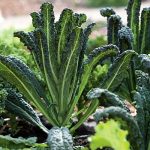Lettuce, Iceberg – Crisphead Saladin
€1.95
Description
Lettuce – Saladin (Iceberg) is a crunchy and crisp ‘Iceberg’ lettuce which has heavy dark green heads and is ideal for the Irish climate. It is very reliable with large well wrapped heads and has few outer leaves. Resistant to mildew and bolting. Iceberg lettuce often has a bad reputation, however, if grown organically it can make quite a wonderful contribution to any salad. It is quite a traditional and reliable variety.
Sowing:
Sow small amounts every 2 weeks from late March until July. Sow 1 seed per cell in modular trays and plant out 4 to 5 weeks after sowing. Do not cover the seeds!
Spacing:
Between rows: 35cm
Between plants in the row: 35cm
Approx. seed count: 200sds
Iceberg lettuce often has a bad reputation, however, if grown organically it can make quite a wonderful contribution to any salad.
Growing Lettuce – Saladin (Iceberg)
Family:
Compositae
Related to:
Endive, chicory, Jerusalem Artichokes, Globe Artichokes, Cardoon, Sunflowers.
Botanical classification:
Both its common and its Latin name are based on an easily noticeable characteristic – it has a heavy, milky juice when cut. This juice is highly narcotic. The word “lettuce” is probably derived from the Old French laitues (plural of laitue), meaning “milky,” referring to this plant. The Latin root word lac (“milk”) appears in the Latin name lactuca.
Introduction:
Lettuce- Saladin (Iceberg) is a one of the most popular salad plants
History:
2000BC in Egypt as edible medicinal herb, as well as for oil production from seed.
In Greek mythology the young Adonis was killed by a wild boar in a garden of lettuces where he had hidden much to the despair of his lover, the goddess Aphrodite.
In the Roman epoch, lettuce was well established. Lettuce was held on high esteem by the Romans for its cooling and refreshing properties. The Emperor Augustus attributed his recovery from a dangerous illness to it; built an altar to it, and erected a statue in its honour.
It only arrived in Central Europe around 800 AD. The first heading lettuce was first described in 1543 AD.
Lettuce has been an important part of human diets since ancient times. It was customary for the Romans to precede their gargantuan banquets with refreshing lettuce salads in the belief that lettuce enhanced the appetite and relaxed the alimentary canal. It had other uses, too. Dried lettuce juice was used to aid sleep in Elizabethan times and through World War II lactucarium, a sedative made from wild lettuce extracts, was used in hospitals.
Hippocrates, the Greek philosopher describes the healing qualities of lettuce. He was born in Cos (from where the lettuce takes its name) in 456 BC.
The bitter milky juice has been used as a substitute for opium in medicine.
Types of Lettuce:
Butterhead:
Butterheads were the only commonly known lettuce in Ireland for a long time. They form a heart with soft, delicate leaves. They have the reputation of being quite bland tasting, but some varieties of butterhead and especially if organically grown can taste quite nice. Butterhead types are not suitable for the cut and come again system.
Crisphead:
Crispheads have become very popular in Ireland in the last twenty or more years. They form a large firm, crisp and succulent heart. Again their reputation for blandness makes them unattractive for home gardeners. However, if organically grown and choosing the right variety they can make an excellent salad. Lettuce – Saladin (Iceberg) is a type of Crisphead,
Cos:
The Cos lettuces form a dark green, upright, elongated heart. The leaves are long, crisp and sweet. In my mind they are the tastiest lettuces available.
Some varieties of Cos, however, are susceptible to a disorder called tipburn during the summer months (see below).
The smaller relative, Little Gem, is the most popular type.
Loose leaf:
These lettuces do not form hearts thus making them suitable for picking individual leaves as required. They mature quickly and are very easy to grow. There are hundreds of cultivars, which include Lollo Rossa and Bionda, Red and Green Salad Bowl.
Batavia:
Batavia lettuces are a fairly new introduction to Ireland. They are a cross between butterhead and crisphead lettuce. Most varieties are very attractive looking and very tasty with lovely crunchy leaves.
Stem lettuce (Celtuce):
The name celtuce derives from Celery and Lettuce (CELery-letTUCE). It is grown for its edible stem which can reach up to 80cm. The heart of the stem has a delicious nutty cucumber–like flavour. Celtuce is a very popular vegetable in Asia, but is virtually unknown in Ireland. Seeds are available from a few seed companies and it can be grown quite easily here.
Note: Many people believe that rocket, mizuna, mustards or cresses belong to the lettuce family. This is not the case. It is important to remember that they are in the Brassica family (Rotation).
Soil and site:
Any reasonable garden soil will do for Lettuce – Saladin (Iceberg). Half a bucket of well rotted garden compost per square metre is sufficient. I advise not to use fresh or semi-decomposed manure for lettuce as it makes the plants grow too fast and they will become more vulnerable to pests and diseases.
The organic standards do not require that lettuce has to be rotated, but I think it is better to do so to prevent a build up of lettuce pests (root aphid) and diseases (downy mildew).
Lettuce prefer a pH of 6.5-7.5.
Planting:
When planting out lettuce which has been raised in a greenhouse or windowsill it is absolutely crucial to harden the seedlings off before planting out.
The seedlings should be planted with their seed leaves (cotyledons) just above ground level. If your seedlings did get a bit leggy you can safely plant them a little bit deeper in order to cover the stem but only up to the seed leaves. The plants definitely seem to appreciate this extra care.
But never plant the seedling deeper. If the growth point of the plant is buried, it will rot away.
Rotation:
Lettuce does not to follow a strict rotation. You can use it as a gap filler, either before a late planted crop or after an early harvested crop or even in between widely spaced crops at the initial stages.
Plant care:
It is important to keep your lettuces weed free at all times and avoid spilling earth onto the leaves while weeding. During dry spells you may have to water the plants.
Harvesting and storing:
I think with lettuce you will often have the same problem: it is either a glut or a famine. They nearly always ripen at the same time and quickly go into flower.
You can pick leaves from the leafy lettuces as soon as they are of a usable size and you can also cut loose leaf lettuce about 3cm above the base of the lettuce as it will send out new leaves which can be cut again about 2 to 3 weeks later.
Tip: Harvest lettuce at sunrise!
It is really true: the earlier in the day you harvest your lettuce the longer it keeps and the more nutritious it is. If you harvest lettuce at 6am and put them in a plastic bag in the fridge it will keep for a week as fresh as when harvested. Never harvest lettuce in the middle of the day.
Lettuce – Saladin (Iceberg)
Potential problems:
Pests:
Leatherjackets
Leatherjackets are the larvae of the cranefly (Daddy Longleg). They eat the stem of newly planted lettuce. It is important to check your newly planted seedlings regularly and inspect the soil under each destroyed lettuce and pick up the larvae before it moves onto the next plant. You can then replant the empty space with a spare lettuce.
Cutworms
Cutworms are the larvae of some moth species. They do similar damage as the leatherjackets.
Slugs and Snails
Everybody knows that lettuce is one of the favourite slug gourmet dishes. It might be a good idea to spread organic slug pellets (Ferramol) around the plants, especially for the first crop.
Leaf aphids
Every year you will get a spell when aphids suck out the juice of your lettuce. Most of the time, the damage is not severe and you can simply rinse off the aphids.
Root aphids
I have noticed in various gardens that root aphids are becoming an increasing nuisance. You notice them when you pull up a sick looking lettuce plant and you find white powdery looking dust and small white aphids all around the roots. Once you have it there is no cure for this lettuce. To prevent further outbreaks try the following combination of methods:
– Keep affected areas free from lettuce for a couple of years.
– Do not plant lettuce after lettuce.
– Try not to leave your plants in the ground for too long. As soon as a lettuce is ready, harvest it and pull out the roots. I appreciate that a bolted lettuce looks very attractive, but if you have root aphids, leaving bolted plants will exacerbate the problem.
– Use tolerant varieties.
Diseases:
The two most common diseases in lettuce are downy mildew (Bremia) and grey mould (Botrytis).
There are now many Bremia resistant varieties available.
Disorder:
Tip burn becomes a problem if there is insufficient calcium in the soil or if the soil is too dry.
Leggy seedlings:
Lettuce seedlings are prone to become leggy and the reason is generally lack of light. So make sure that your propagation area is in full sun. In Ireland we get plenty of natural shade, especially the last few summers.
Leggy seedlings are weaker and the plants are thus more prone to pests and diseases.
How much to grow?
Most people sow too many seeds at one go and have a massive glut at some point and nothing afterwards. From one sowing they will all ripen around the same time and will only last for a week or two in the garden before they bolt (go to seed).
A little bit of planning will provide you with lettuce for many months. For example if you eat 5 heads of lettuce per week sow 15 seeds every fortnight. The 5 extras are spares for potential slug or leather jacket casualties.
For more information have a look at my monthly newsletters on:
https://greenvegetableseeds.com/newsletters/
Have a look at the Irish Garden magazine:




